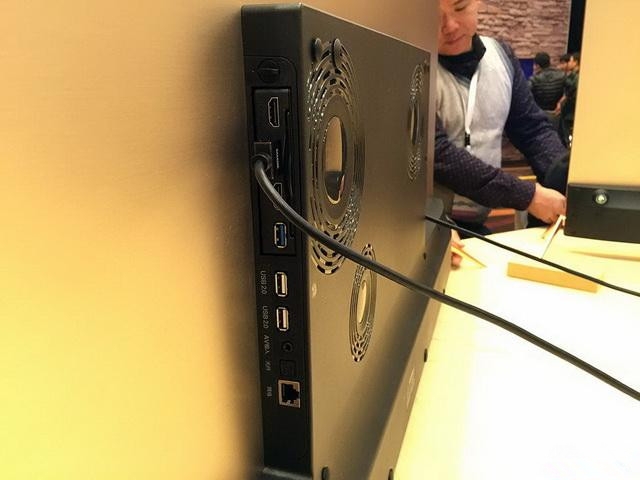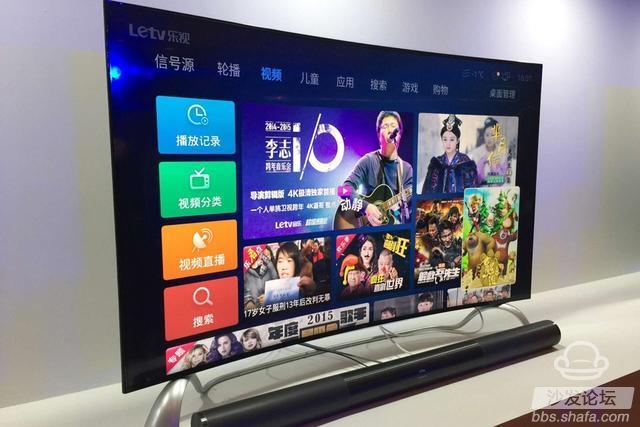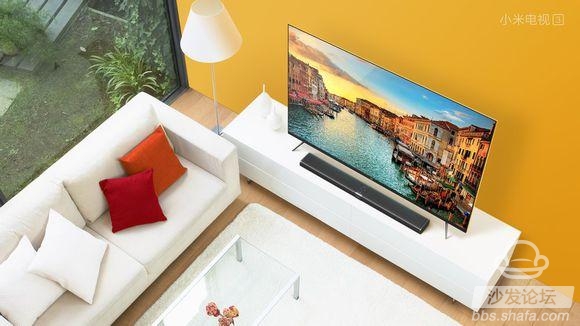
From the second half of this year, TV circles that can no longer find hot spots have "split up" as a brand-new concept of smart TV to promote it. Many manufacturers that have launched split TVs regard this concept as a brand-new solution for upgrading consumer experience. However, I believe that the so-called split TV is not only not a new concept, but also does not bring about an essential improvement to the user's upgrade experience. On the contrary, it violates the trend of smart TV integration, not only is the gimmick more practical, but also more backwards to the industry. Suspected.
Who released a splittable upgradeable TV
In fact, the concept of split TV did not begin until the second half of this year. Previously, Samsung, Haier, Barley, and Lenovo all pushed similar products. However, some of them were presented as separate mainframes, while others were in the form of a card. Appear, but the essence is the same. All in all, this was a matter of the past year. It did not cause much sensation in the industry at that time.
And when everyone had already forgotten the split TV, Xiaomi launched a heavy-duty television with a three-part TV in October. When I saw this news, the first thought was: Why do good televisions have to be "split?" Can millet take the concept of “elimination†again?
However, what people didn't think of was that in early November, the T55 was first developed in a cool manner. In addition to its main appearance and audio, it also added the concept of upgrading; after another month, the storm has been officially secretive. The release also uses split design, and even last year, Haier’s feeling of modular TV possessing. In fact, it is LeTV who finally brought the concept of split to its climax. Not long ago, LeTV released a fourth-generation super TV in a high-profile manner. It not only used a screen and host separation model, but also brought a curved-separate TV model, letting people have a look. "Duang ~ Duang ~ Duang ~ feeling.
The split concept did not address the key requirements
“Split TV separates the display part, the signal processing part, and the sound system of the TV. It is composed of a TV display terminal, a TV host, and a TV audio system. It breaks the structural pattern of integration of traditional TVs and solves the traditional problem. Many problems that television has not been able to solve for a long time have greatly improved the service life, sound effects, and functionality of flat-panel TVs. Historically, TVs have been individually customized (DIY). The three components can be freely combined and upgraded. It also provides necessary conditions for the development of smart TVs. It is a revolutionary breakthrough in the history of television development and will surely lead the new consumer concept of home appliances." - The above text is taken from Baidu Encyclopedia
Obviously, the "split concept" appears to have two advantages for smart TV manufacturers: one is to bring up the concept of a brand new TV upgrade, and the other is to solve the acoustic problem. However, is this really the case?
The existing modular upgrade has become a pure gimmick

From the standpoint of upgradeability, Samsung, Haier, and Lenovo were the first to launch split-up scalable concept TVs. Although they were all giant manufacturers, they unfortunately ended in “failureâ€. Just a few months ago when I evaluated a brand new smart TV from Samsung, I consulted Samsung’s official customer service: “Can I upgrade the “TV of the Future†that Samsung promoted last year to this year by upgrading the module? Tizen system product?†Customer service gave me the answer is really not “can notâ€, but I think this is a very good advice, can be part of the feedback to the relevant products ... ... I was kind of speechless feeling.
And look at Haier. At that time, the biggest highlight of Haier’s release of modular TVs was the ability to customize differentiated product function modules for users. When TVs need to be upgraded, users do not need to replace the entire system. Simply customize the game according to individual needs, and replace the 4K live broadcast module. However, after a year and a half, I discovered that the so-called "Modular TV Dedicated Module" is still only one in Haier's official mall.
Obviously, from the above two examples, although the concept of "screen reservation and hardware upgrade" proposed by the manufacturer is not too big, it is still very difficult to implement in the actual operation process.
Then we look back at the situation. Will Storm TV and Xiaomi, who focus on the scalable concept in the second half of this year, not know this situation before? In fact, the concept of split upgrade emphasized by Storm TV is exactly the same as that of Haier’s previous modular TV. The highlight is that the hardware can be upgraded. However, whether we are from the conference site or the official website of Stormwind TV, Storm TV has only emphasized that “the current module price is 599 yuan, which is released on December 7 each year†and “a free upgrade of the host computer is possible within three years after one year. Other news and other details were not announced; while Tencent’s home appliance interviewed Coolo chairman Wang Zhiguo, he mentioned that the cool meeting will be used to collect big data. After two years, users who frequently use the Internet will be upgraded with free hardware. Home delivery, but there is also no detail plan for the consumer.
In fact, we might as well think about it. Even if the intelligent function of the TV has been developed at a rapid rate, how is it? How many consumers really need to replace TV hardware? Of course, if you say this may be somewhat extreme, but since the main concept is the concept of hardware upgrade, manufacturers must also be clear: "How to upgrade?", "Why upgrade?", "What kind of users need to upgrade?" ? However, it is clear that these problems do not yet have a definitive answer.
Split speaker is a "lazy" program

In addition to upgrading, the second selling point of split TV is to enhance the acoustics of the TV itself. In their opinion, due to the limitation of objective conditions, televisions cannot be incorporated into larger cabinets, directly affecting the user's viewing experience. Earlier, Xiaomi Wangchuan clearly stated in an interview with the media that improving sound effects was the original intention of Xiaomi TV 3 as a split body.
It can be seen that, unlike the split-modular TVs that are based on the concept of main upgrades, most split TVs that use sound effects mostly use a screen + separate external host, which is equivalent to integrating the speakers with the TV host. For example, the Xiaomi host's speaker part claims to have a 2L volume, 60Hz bass dive, 22KHz treble extension, support for Dolby Audio, etc.; LeTV's 4th generation super TV split host has a Harman Soundbar inside, known as the effect of super Well, selling is full.
However, I think that, first of all, the sound effects are not just what TV users need. The outstanding audio experience highlighted by Split TV is actually a demand that has been specifically “amplifiedâ€. Although with the advent of the age of intelligent television, more and more Internet audio-visual content has brought people's attention back to the TV screen. However, we may recall that how many people around you mentioned TV in particular. Sound is not good? Friends who really want to have a better sound experience have already bought the SoundBar and even set up a home theater.
Secondly, one of the biggest features of the intelligent era is that it has a high degree of integration. If TV manufacturers really want to improve their sound effects, they should use industrial design and audio technology to integrate them into their TV sets. The experience of integration is not so simple as "The sound is not good with speakers." What's more, there are not smart TV products in the market that emphasize sound effects, such as Sony and PPTV. It can be seen that "Split to enhance television sound" is obviously a "lazy" solution.

This is obviously the official website

But actually it has become like this
In addition, judging from the current demand for smart TVs, even the cable TV set-top boxes that are “must†have to be replaced are racking their brains with various software, not to mention that new TVs are unpromising and many are on the table. A TV host must also use cable to connect with the screen alone. I think that as long as there is no special demand for television audio, this is not what you want to see.
Essential experience is not much different from the TV box
Obviously, whether it is a separate TV host or a module card behind the screen, their essence is not much different from the TV box. According to the recent Aowei online monitoring data, the online retail volume of online boxes in September this year was 498,000 units, a decrease of 16.7% from the previous month. Retail sales amounted to 120 million yuan, a decrease of 18.3% from the previous quarter. Ovi believes that the culprit that caused this situation is the development of the popularization of smart TV.
Therefore, in today's smart TV products, light and thin, integration is more and more obvious today, TV manufacturers do not seek to improve technology to improve user experience, but build a gimmick and push back the TV box that has been recognized by the industry as a transitional product. Not only is it not the best solution for the consumer, it is even a regression of the industry in a sense.